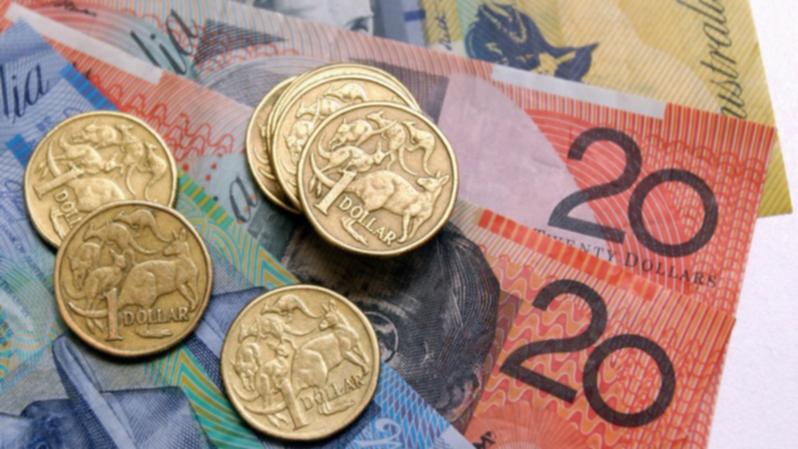RBA interest rates recap: Reserve Bank of Australia’s November board meeting call revealed

BOARD HOLDS AGAIN: Saddle up for three big events today that are all champing at the bit to change the course of history.
OK, that may be a bit of an overstatement … but how often do the stars align to deliver in one action-packed 24 hours a Reserve Bank rates call, a Melbourne Cup and a presidential election?
And before the nit-pickers pipe up with their clipboards and tell us that “technically, the US election is tomorrow in Australia when you account for the time difference”, save it.
Right now it’s November 5. Just how you justify having a drink in the departure lounge at 7am because “somewhere in the world it’s beer o’clock”, the US goes to the polls on November 5. That’s today. Deal with it.
And if you want to kick off this triple threat with a dead cert, start with the RBA continuing its long run of holding the official interest rate at 4.35 per cent ... just as it has for every meeting since November last year.
The chance of the board declaring an end to the war on inflation and easing the credit purse strings is about as likely as Donald Trump getting to the end of a rally without his pants on fire.
But what every squeezed household with a mortgage will be hoping for is a softening in language about the timing of the first cut, which most experts agree will come in February. Some less optimistic commentators are now saying May.
Price growth has steadily declined in recent months, with data last week showing headline inflation back within the RBA’s 2 to 3 per cent target range, aided by government energy bill rebates. Strip out such volatility and it’s still running at an annual 3.5 per cent.
That, along with continuing strength in the labour market, is all the cover the board needs to push back against growing cries for relief and keep rates on hold. It’ll probably be the same story at its December meeting. Sorry, no early Christmas stocking stuffers.
RBA governor Michele Bullock has been consistent in her message — the board wants to see inflation sitting “sustainably” within that 2 to 3 per cent range. One data set is unlikely to tick that box.
But, forget all that. It’s Cup Day (and possibly the start of a new American revolution) so grab the champagne and — if you have any money left after paying the mortgage — consider an across-the-field flutter.
Until the RBA starts cutting, for now it’s all about the little victories.
Giddy-up.
Key events
05 Nov 2024 - 11:48 AM
Lag effect puts RBA behind its peers
05 Nov 2024 - 11:43 AM
Mixed views on future rate cuts
05 Nov 2024 - 11:36 AM
What the RBA had to say ...
05 Nov 2024 - 11:30 AM
And it’s a hold ... again!
05 Nov 2024 - 11:20 AM
A joke? No, here’s REAL superpower behind #girlmath
05 Nov 2024 - 11:11 AM
Retailers ready for jingle tills
05 Nov 2024 - 10:39 AM
Here’s how much big banks REALLY make from your mortgage
05 Nov 2024 - 10:34 AM
Wallet feeling lighter? ‘Don’t blame the corporates’
05 Nov 2024 - 10:28 AM
The arguments for keeping rates on hold ...
05 Nov 2024 - 10:13 AM
With the RBA staying schtum, the dog days are over!
05 Nov 2024 - 10:10 AM
Is US election holding back a move from the RBA?
05 Nov 2024 - 10:02 AM
Homeowners struggle to keep up, urged not to wait
Is US election holding back a move from the RBA?
The RBA is today likely to highlight the need for further restrictive credit, with some core consumer prices staying stubbornly high.
Geopolitical strains could also weigh on the board’s call.
Markets are already pricing a return of Donald Trump as president in the US - an outcome that will likely lead to an intensification of trade turmoil.
“Globally, there’s more uncertainty than usual and coupled with the domestic data, argues for caution and patience from the RBA,” said Su-Lin Ong, chief economist at Royal Bank of Canada.
“Top of the list of uncertainties will be the US election - both the presidency and composition of the Congress.”
Financial markets are bracing for volatility from the US presidential election. Traders are weighing the impact of a disputed result or a renewed trade war with China.

Despite Australia’s anemic growth, the RBA isn’t prepared to cut rates yet with governor Michele Bullock reiterating that inflation needs to move “sustainably” inside its 2 to 3 per cent target.
Even when rate reductions do begin, many economists expect the RBA will undertake a shallow easing cycle, reflecting its cash rate peaking one percentage point below that of the Federal Reserve. ng inflation as government rebates are suppressing the headline figure.
“We see no reason for the RBA to change its messaging that it is not ruling anything in, or out,” said Josh Williamson, economist at Citigroup. “Thus, the neutral-hawkish bias should persist.”
If Australia’s labour market remains strong, Mr Williamson said, the RBA will likely delay rate cuts to May. “Risks are now squarely towards a higher terminal and delayed rate cutting cycle.”
Surprise! Our rates among lowest in G20
The Reserve Bank’s interest rate setting is among the “softest” in the G20 club of big economies even after 13 hikes thumping borrowers, new data shows.
While the official cash rate stands at 4.35 per cent, the country’s real interest rate — which adjusts for the impact of rising prices — is 1.55 per cent.
Australia is in line with the European Union and there are only four countries in the Group of 20 that are lower, according to analysis of fresh Bloomberg data.
Read the full story here ...
Homeowners struggle to keep up, urged not to wait
New figures reveal almost one million mortgagees have refinanced their loans and switched lenders since the RBA started turning the screws on easy credit in May 2022.
More than 666,700 of them were owner-occupiers. The remained were investment mortgages.
However, Canstar estimates from recent presentations that the big four banks alone hold over five million mortgages - including split loans - suggesting millions of loans are still with their existing lender.
“There are many reasons why a borrower has not refinanced,” the comparison site said.
“Some may have haggled with their current lender instead of refinancing, while others are stuck in mortgage prison, either unable to pass the loan approval process at higher rates or because they have less than 20 per cent equity in their loan.
“A small number are still on ultra-low fixed rates but for many, complacency is likely to be a factor.”
Canstar said an owner-occupier who has not renegotiated their mortgage since the start of the current rate hikes is likely to be on a rate of 7.11 per cent, while RBA data for August 2024 shows the average owner-occupier variable rate is just 6.35 per cent.
“While borrowers may be tempted to see the February meeting as soon enough for rate relief, there’s no guarantee the RBA will cut the cash rate at its first meeting of 2025,” Canstar said.
“Instead of leaving it to chance, borrowers should turn the possibility of a rate cut into a reality by taking action themselves.”
A borrower with a $600,000 loan today could potentially save almost $12,000 in the next two years by switching to a lender under 6 per cent, even after factoring in estimated switch costs.
Play it again, RBA ...
The Reserve Bank of Australia is widely tipped to keep rates on hold but a dovish turn in its post-meeting statement could lay the foundations for a pre-Christmas cut.
The clear consensus of economists and the market is that the RBA board will keep the cash rate at 4.35 per cent at Tuesday’s meeting, given underlying inflation persists higher than they would like.
AMP chief economist Shane Oliver still believes the central bank’s first cut will most likely come in February, though a December cut remains possible if monthly underlying inflation in October falls sharply and unemployment rises.
“While inflation fell again in the September quarter, the RBA will likely regard underlying inflation at 3.5 per cent year on year as still too high, with services inflation remaining sticky and will see still low unemployment as meaning that there is no urgency to cut,” he said.
“But the continuing progress in getting inflation down may see it become a little less hawkish in its commentary and it may make small downwards revisions to its inflation and growth forecasts for next year.”
Dr Oliver was one of 38 economists surveyed by Finder in the lead-up to the meeting who all predicted the cash rate to remain on hold in November.
Originally published on The West Australian
